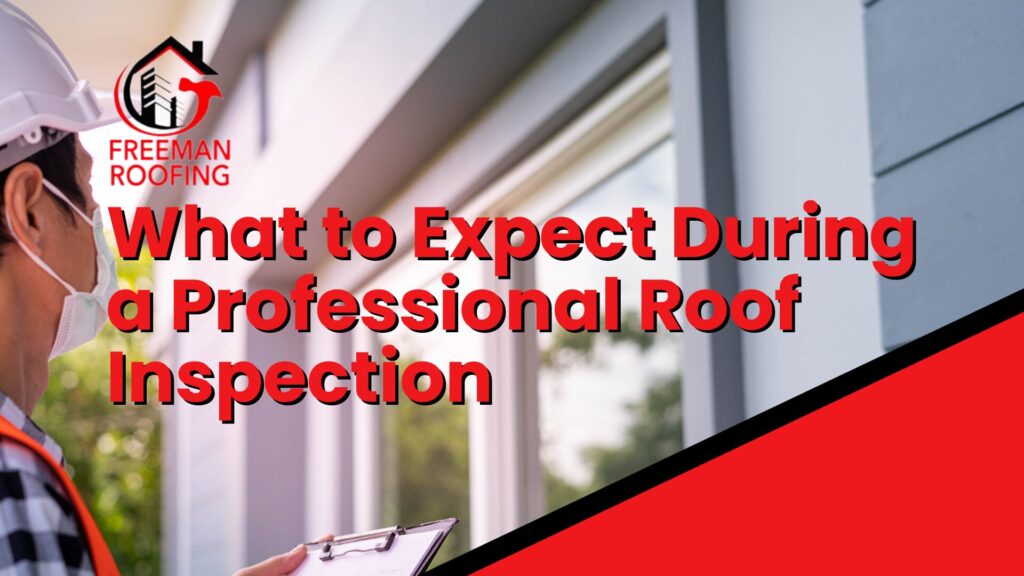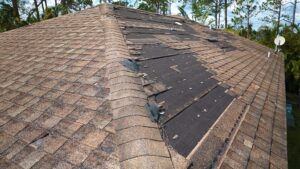What to Expect During a Professional Roof Inspection

A roof inspection is an essential part of maintaining your home. Whether you’re planning to sell, facing storm damage, or simply want peace of mind, a professional roof inspection ensures your roof is in good shape and protects your home from costly repairs down the road. But what exactly happens during an inspection, and why is it so important? Here’s a breakdown of what to expect during a professional roof inspection.
Why Schedule a Roof Inspection?

Regular roof inspections can help identify problems early, saving you money and preventing extensive damage. Common reasons to schedule an inspection include:
- Storm Damage: After severe weather, an inspection ensures your roof hasn’t suffered hidden damage.
- Routine Maintenance: Annual inspections catch wear and tear before it becomes a bigger issue.
- Buying or Selling a Home: Inspections provide buyers and sellers with a clear understanding of the roof’s condition.
Whatever the reason, a professional inspection provides valuable insights into your roof’s health.
Step-by-Step Guide to a Professional Roof Inspection
1. Initial Assessment
The inspection begins with a visual assessment from the ground. The inspector will look for obvious signs of damage, such as missing shingles, sagging areas, or visible debris. This step helps them identify areas that need closer examination.
2. Exterior Inspection
Next, the inspector climbs onto the roof to check its surface. They’ll examine:
- Shingles: Are there cracks, curling, or missing shingles?
- Flashing: Is it securely in place and free from rust or damage?
- Gutters: Are they clogged or pulling away from the structure?
- Roof Penetrations: Areas around chimneys, vents, and skylights are checked for proper sealing to prevent leaks.
3. Interior Inspection

The roof isn’t just what’s visible from the outside—its interior components play a crucial role. Inspectors will often check your attic for:
- Water Stains or Leaks: Signs of moisture intrusion can indicate roof damage.
- Ventilation: Proper airflow prevents excess heat and moisture, extending the life of your roof.
- Structural Integrity: Sagging or compromised beams may suggest deeper issues.
4. Documentation of Findings
As the inspection progresses, the professional will document their findings with photos and notes. This detailed report provides a clear picture of your roof’s condition and highlights areas that need attention.
5. Recommendations and Next Steps
Once the inspection is complete, the inspector will review their findings with you. They’ll outline any immediate repairs, maintenance tasks, or replacement considerations. Most professionals will provide a written report for your records, which is particularly helpful when dealing with insurance claims or planning upgrades.
How Long Does a Roof Inspection Take?
Most professional roof inspections take 1-2 hours, depending on the size and complexity of your roof. Severe damage or hard-to-access areas may extend the time slightly.
Key Benefits of Professional Roof Inspections
- Early Problem Detection: Catching minor issues before they escalate can save thousands in repairs.
- Insurance Claims Assistance: A professional inspection report can be invaluable when filing claims for storm damage.
- Peace of Mind: Knowing your roof is in good condition lets you rest easy.
When Should You Schedule a Roof Inspection?
Experts recommend scheduling a roof inspection at least once a year or after major storms. It’s also a good idea to have your roof inspected before major renovations or if you notice warning signs such as leaks or unusual noises.
Bottom Line
A professional roof inspection is a straightforward process that provides homeowners with vital information about their roof’s condition. From identifying damage to recommending solutions, a roof inspection ensures your home remains safe and secure. Scheduling regular inspections is a proactive way to protect one of your home’s most critical components.
